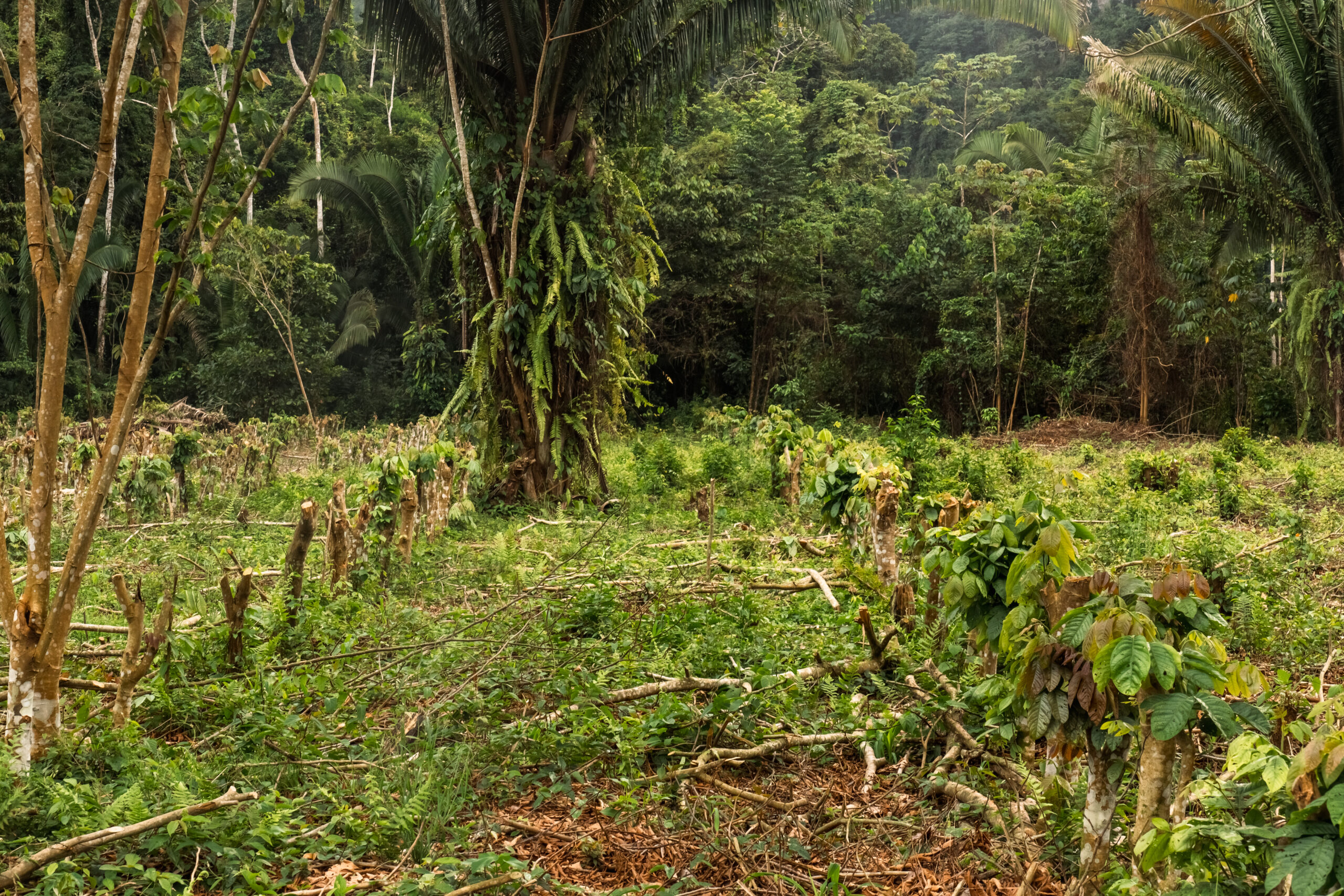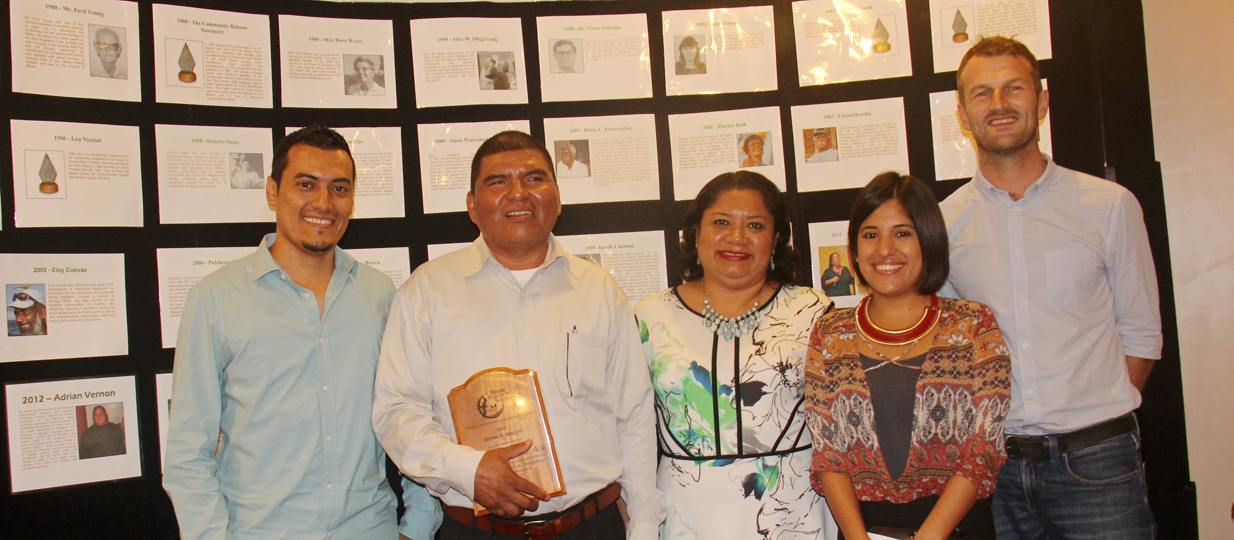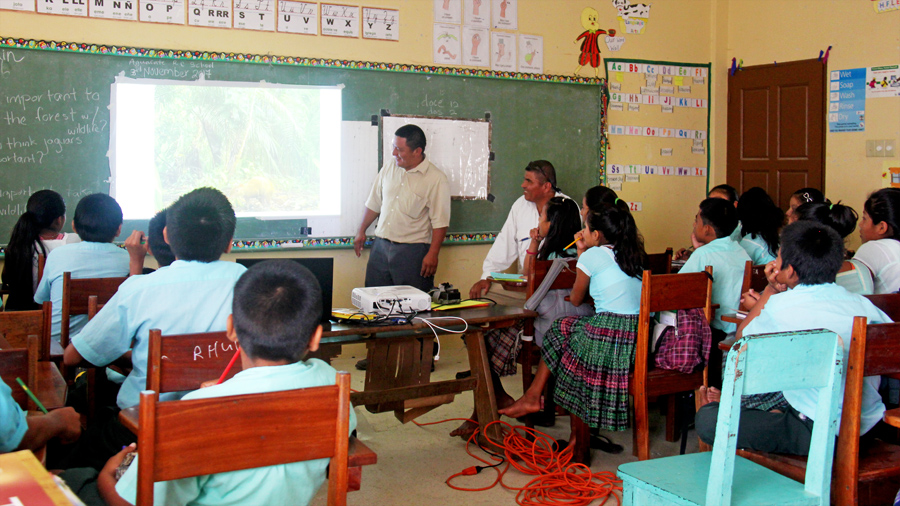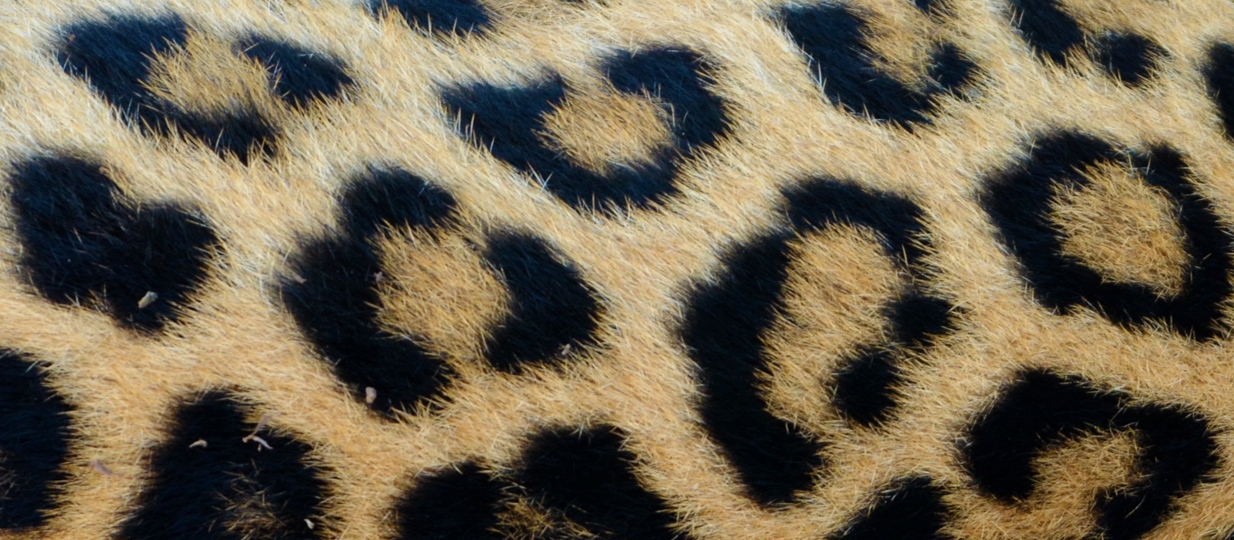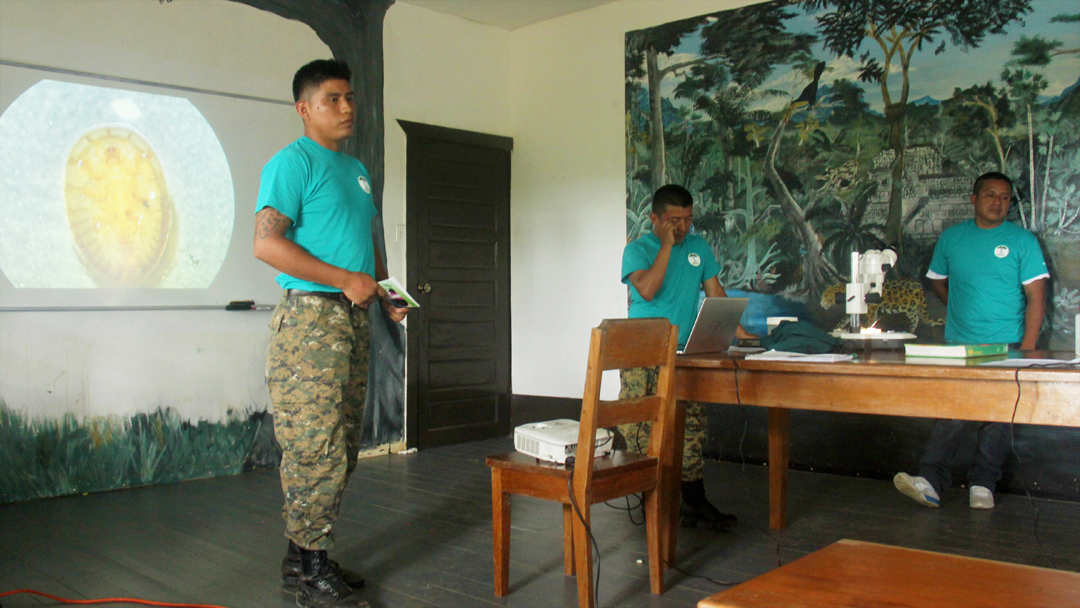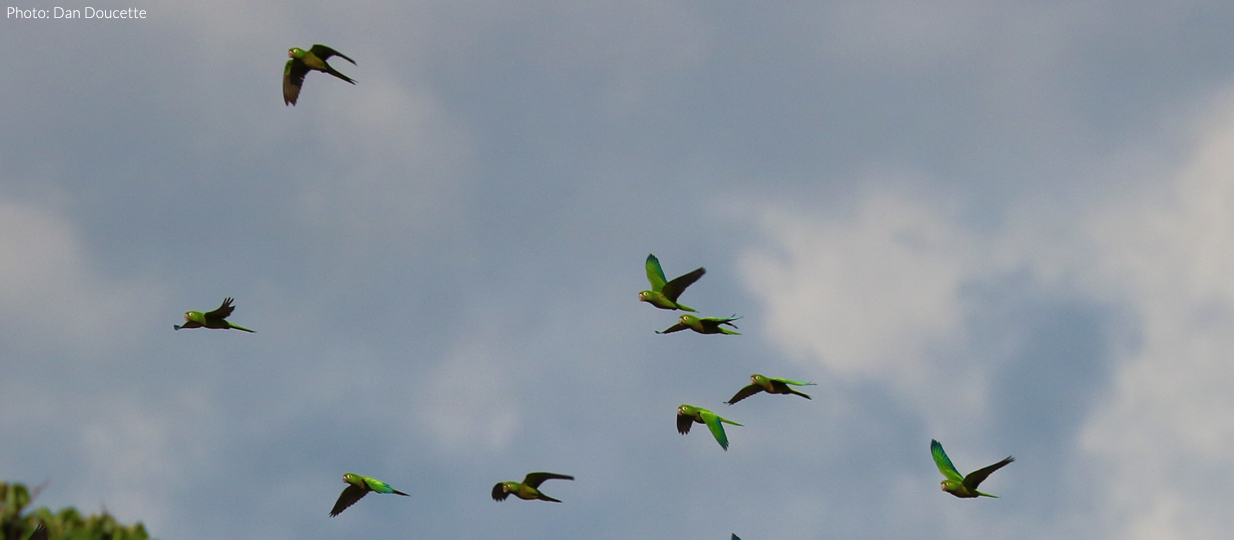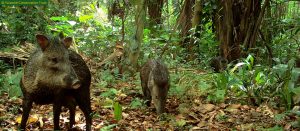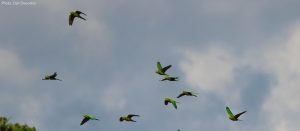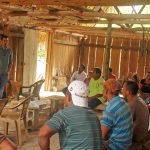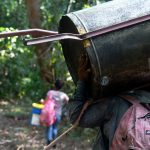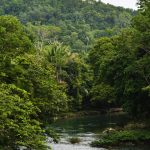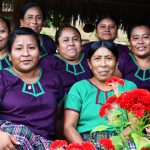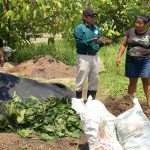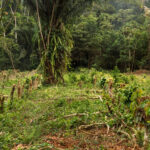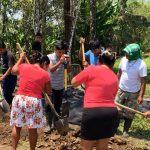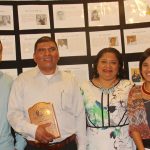Ya’axché works with livestock farmers to implement unique mitigation measures that help protect jaguars and keep cows.
As night approaches, Agnis Ujan nervously watches the spectacular sunset over the Maya Mountains west of Big Falls village, southern Belize. Fireflies soon fill the starless night. A chill wind blows from the Caribbean Sea in the east, as her husband Henry prepares for a long night ahead guarding his cattle. A pregnant female might give birth to a calf tonight, and Agnis knows very well that if the calf is not guarded, jaguars could snatch the warmth from the farm like the cold winds of the night.
“If you see that jaguar, fire that shot Henry!” Agnis shouts with emotion as her husband warms up his motorbike. Farmers in surrounding communities often kill jaguars in retaliation for killing their livestock. Henry has never seen a jaguar on his farm, but the tracks are evident. He wonders whether he can bear guarding his cattle in the pitch dark as he arrives at his farm. A loud thud startles Henry; he goes to inspect the noise. A cow has fallen, and Henry witnesses the birth of a young bull.
The beam from his flashlight gets brighter, and Henry questions whether he is dreaming. Not a slight chance; it is the break of day light. The golden lights punctuate the sky and the sun rays burst between clusters of clouds – it is going to be a beautiful day!
Henry is full of excitement and shares the news over a phone call with Agnis. Agnis shows up to the farm with a big smile. They celebrate over breakfast. The young bull appears healthy; he begins to train his feeble legs. Grounded by reality, Agnis asks, “How will we ensure this young bull matures?” Henry reassures her that he will guard it to the best of his ability. He retires early to rest for the upcoming night shift. Agnis finishes tending the cows before joining him
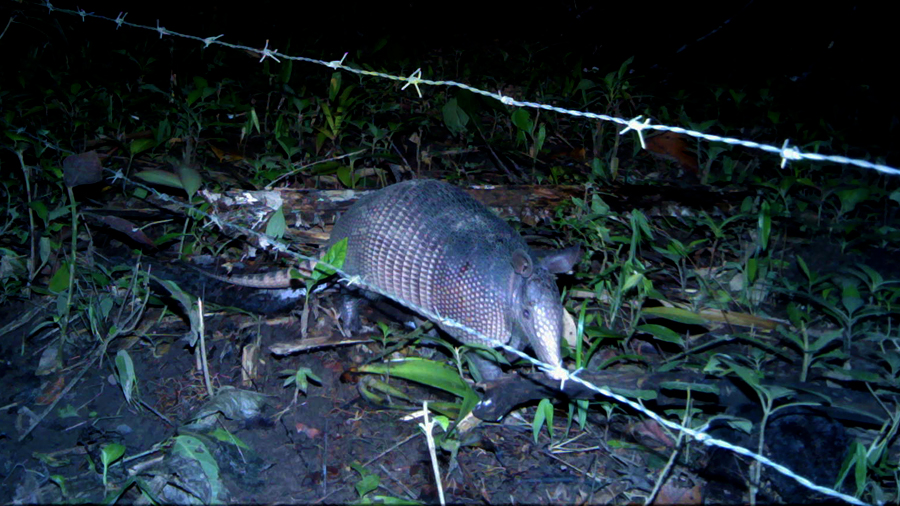
The ruckus of plain chachalacas, typically loud birds, fills the incoming dusk atmosphere. Henry prepares for a night of guarding his cattle with even higher stakes. This time Henry must be on high alert, so he doubles up on his stash of coffee. Agnis begs her husband to guard the cattle the best he can as he heads out the door. He arrives at the farm just as night settles in, and the cattle gather near his shack.
Agnis remembers her youthful days and her introduction to cattle rearing at age 12 – a tradition passed down from her mother. Agnis’s mother relied on rearing cows for her family’s livelihood but never faced the problem of jaguar depredation. Agnis questions whether increased hunting of the jaguars’ food and clearing of forests have contributed to the problem she now faces. She recalls a time 3 years ago when she lost her calves 3 weeks after birth. Now, she struggles to keep her calves alive for more than 3 days. She wishes that her young bull will live to adulthood.
Henry patrols around his farm, looking for jaguars before they get to his cattle. He doesn’t see any signs of jaguars and returns to his shack for a coffee refuel. The cattle snack on grass peacefully. Suddenly, commotion breaks the silence. Henry’s coffee mug slips from his grasp. He reflexively grabs his rifle and steps outside to see what the breaking sound was. His young bull has vanished into the darkness. Henry hurries around the farm in search of his calf, but it is indeed gone in the night.
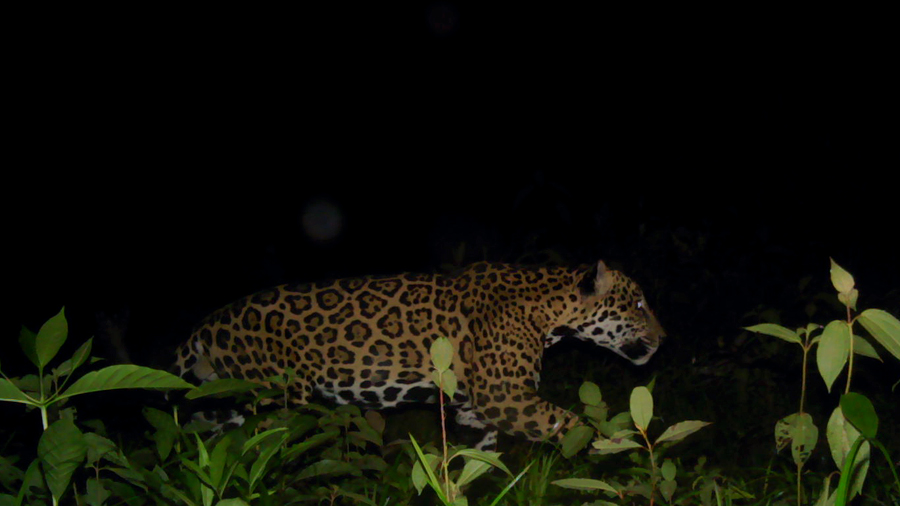
For the remainder of the night Henry wonders how to best break the news to Agnis. He greets Agnis at the farm entrance and shares the bad news. She’s overwhelmed with grief. They have been here before, but Agnis’s strength reminds her that together, they can ensure the calves mature on their farm. In the midst of loss, Agnis recalls receiving an invitation from Ya’axché to participate in a workshop on human-jaguar conflict. She makes a proactive decision to attend in hopes of finding new solutions to keep her herd safe.
At the workshop, Agnis meets farmer colleagues who raise cattle and sheep throughout the Toledo District and who are members of the Toledo Livestock Association. She vocalizes to the group the problems she faces at her farm in Big Falls, which creates a wave of uneasiness towards jaguars from the other farmers. She wonders how these new mitigation measures such as solar lights will fit on her farm, but the reassurance of Ya’axché staff helps her to make a decision to join Ya’axché’s Jaguar Program.
Soon, members of Ya’axché’s Jaguar Team Marchilio Ack and Karla Hernandez visit Agnis’s farm to assess its strengths and weaknesses, create a farm profile and suggest mitigation measures that may address her challenge. Agnis is open to following the team’s advice and jointly find solutions to this very sensitive issue. She can no longer bear the loss of her calves, as each is a big loss for her family.
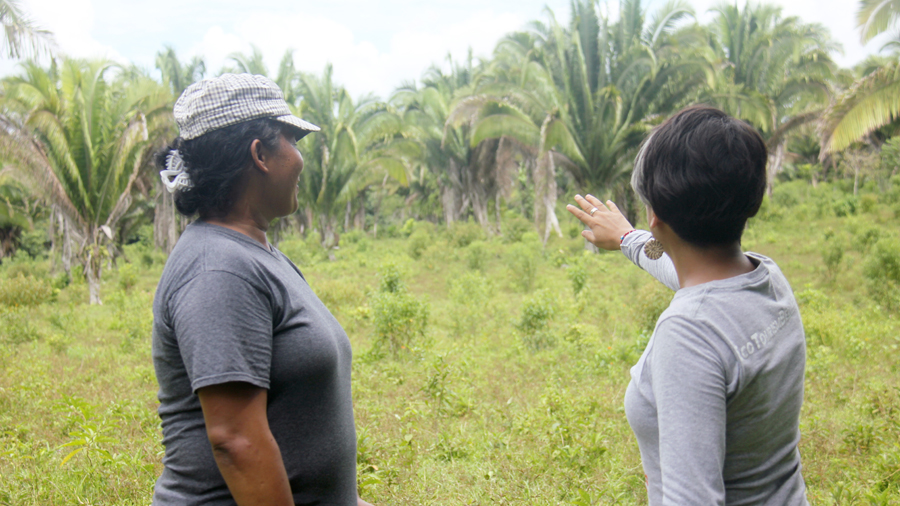
Agnis accepts that she can’t continue raising her cattle like she did in her youth and hopes that implementing new strategies will work out for the best moving forward. As the sun rises beautifully over the lowland forest, Agnis begins to prepare breakfast for Henry. Today, they will be deploying camera traps around the farm to get photographic evidence of jaguars in the area. Henry arrives from an uneventful night for breakfast filled with excitement about these new mitigation measures.
Marchilio and Karla arrive in Big Falls to pick up Agnis and Henry. “One of my cows is pregnant and might have a calf within a week!” worries Agnis. Karla reassures her that most of the mitigation measures will be installed before the calf arrives.
Agnis and Henry have never used a camera trap before. Marchilio explains that Ya’axché has been using camera traps for years to monitor wildlife in the 3 protected areas it manages. “Basically, whatever passes in front of the camera trap, day or night, will trigger the camera sensor to take a photo,” explained Karla. “Every week you will need to check the camera traps to see if the batteries or storage cards need replacing,” elaborated Marchilio. Agnis and Henry pose for the camera trap to test whether it is working. Karla extracts the memory card, slips it into a computer and shows them their photos. They burst in laughter at the sight of the candid moment.
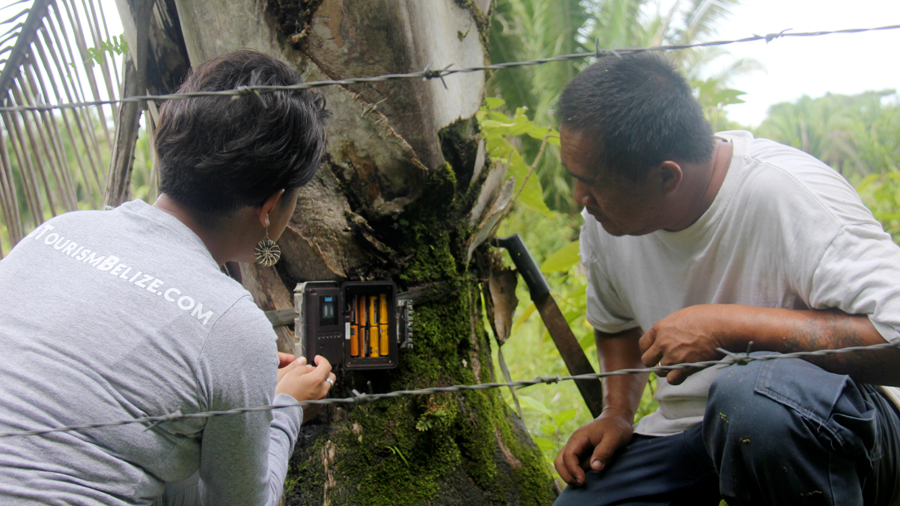
Next, the Jaguar Team shares a design for a corral to protect the cows at night and explains the maintenance that it will need. The fence, wrapped around a fortified corral, is to be over 10 feet in height. Motioned-triggered sound alarms and solar lights will be installed on the corner posts. Once complete, it will be a difficult task for jaguars to prey on the calves. Agnis and Henry are confident with the blueprint. Karla informs Agnis that after the deep assessment of her farm, she is qualified to receive support to acquire materials needed to construct the corral. Karla assures the couple that she and Marchilio will return the following week to install the solar lights and sound alarm devices.
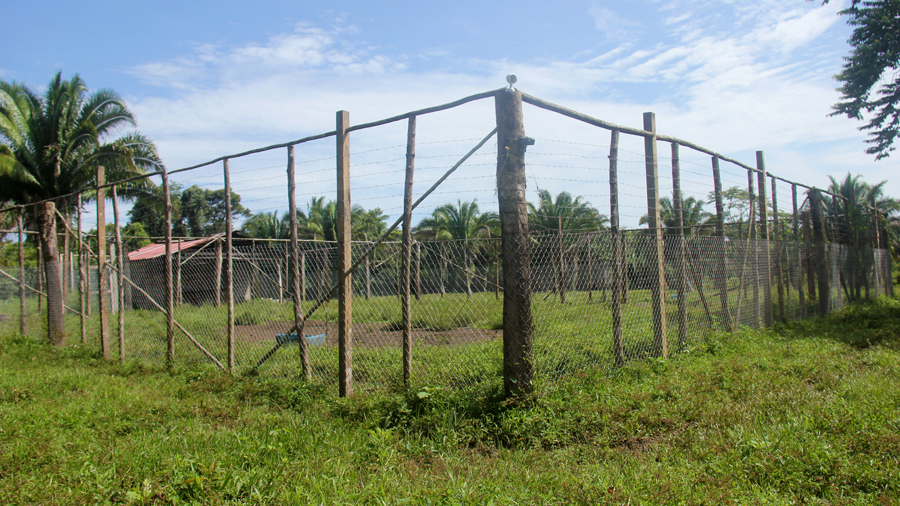
Agnis wastes no time in gathering materials to construct the corral, which she was able to purchase through the funding assistance of Ya’axché’s Jaguar Program supported by the US Fish & Wildlife Service. Her cow will give birth soon, and she hopes to have the corral ready in time for the new calf’s arrival. Henry constructs the corral with the help of his friends to meet the specifications of Ya’axché’s team. Agnis arrives to inspect a job well done – she is pleased. Agnis calls her cattle to enter the corral but they seem a bit hesitant at the sight of the new structure. Their trust in Agnis eventually leads them to embrace the security of the corral as they settle in for the night. Henry and Agnis are proud of their accomplishment and retire home for a long night ahead.
History is made on the farm; the first calf is born in the corral!
“Three nights ago, the cow gave birth to a baby cow in the corral!” remarks Agnis with excitement as Marchilio and Karla arrive to inspect the corral. “Congratulations Ms. Agnis!” cheers Karla. “Henry is waiting for us at the farm. We will meet him there,” Agnis explains.
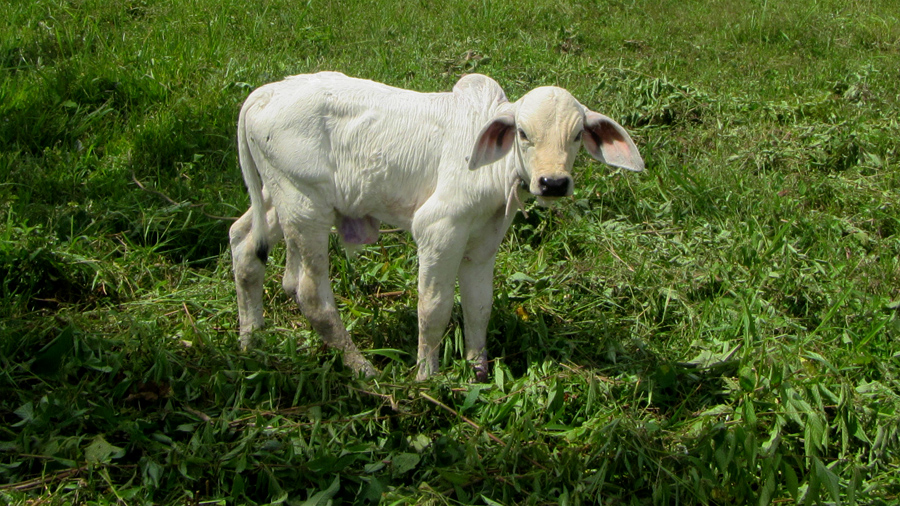
The healthy white calf is enjoying grasses near the corral with his mom nearby. The Jaguar Team approves the corral. As they set up the equipment, Karla and Marchilio explain how the solar lights work and set off the sound alarm devices to demonstrate. Agnis shares that the camera traps are working fine and that they have not seen a jaguar since the last visit. “Now that everything is set up, report to us any issues that you face. We will visit you monthly,” explains Marchilio. Agnis is happy with these mitigation measures.
Months pass and Agnis now has 4 calves on the farm. “I am very thankful for Ya’axché’s help. I have not lost a cow in 2018. Before, I could not raise a calf on my farm because jaguars would take it during the night, but now we have calves maturing!” shared Agnis at a reunion with the livestock farmers.
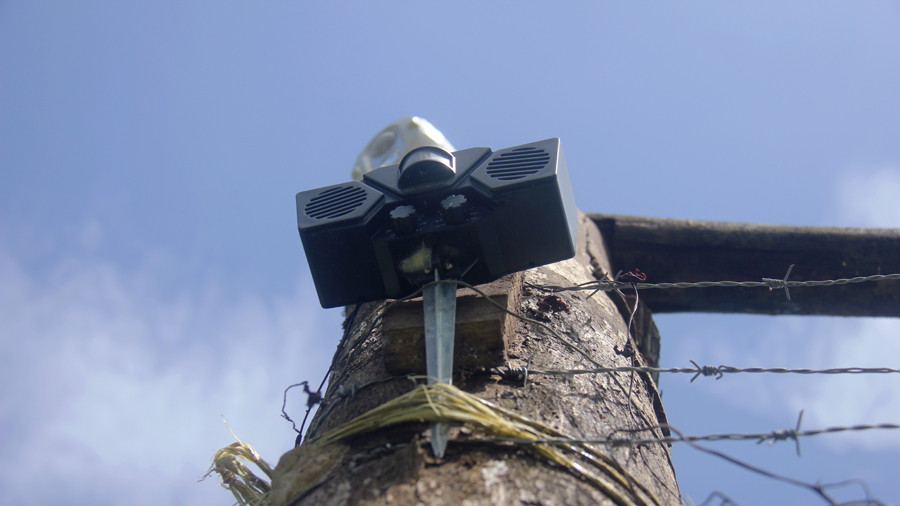
Ten months into the year, Agnis has still not lost a cow or calf! She shares information on these mitigation measures with fellow farmers. She is happy to have found a balance between jaguars existing in the forests around her and the cattle remaining in safety on her farm.
Ya’axché’s Jaguar Team continues to visit Agnis’s farm and others that are part of the Jaguar Program. There is still a lot more mitigation work to be done with small-scale livestock farmers in southern Belize. Currently, Ya’axché is working with farmers from 6 different communities in order to gather solid information on how to effectively reduce retaliatory killings of jaguars resulting from livestock predation.
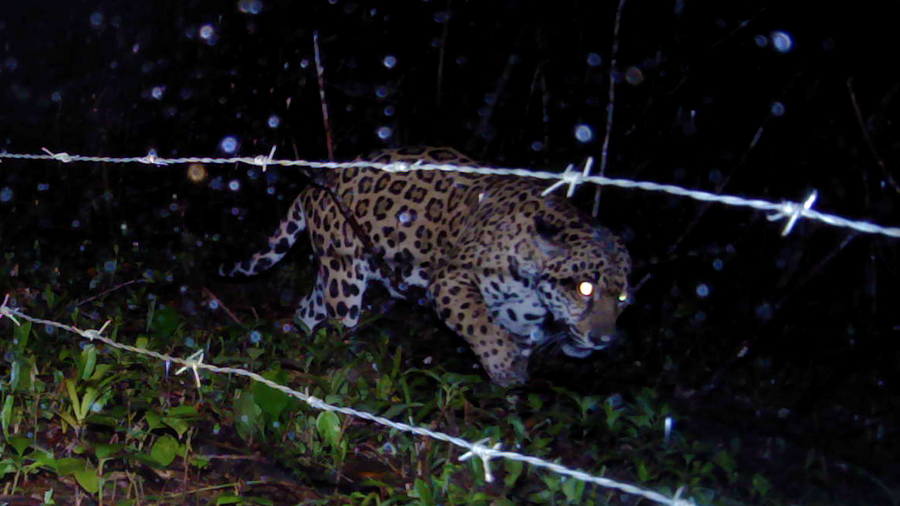
This sensitive and pressing issue has pushed Ya’axché to work outside of its focal work area – the Maya Golden Landscape. Ya’axché has identified 2 more farms to convert to jaguar friendly farms so that it can influence farmers in new areas to form healthy co-existences with wildlife. By educating farmers and helping them to implement mitigation measures, it is possible to reduce the killing of jaguars in defense of a livelihood. Humans and jaguars can coexist.

